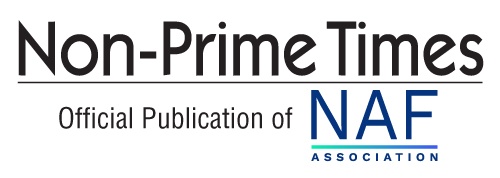When I was a young attorney at the Federal Trade Commission, the FTC’s Bureau of Competition was bogged down with some massive antitrust litigation matters. A tongue-in-cheek memo was circulated internally, claiming that the Director of Competition was proposing doing away with the “evidence” requirement as a way of moving big cases. We all had a good laugh.
I now worry that the old satirical memo has resurfaced at the Consumer Financial Protection Bureau, and the CFPB didn’t understand it was a joke. Why? My concern is based on the CFPB’s legal theory in one part of a recent federal district court complaint against a subprime auto creditor.
We all know that dealers often sell contracts with high-credit-risk customers to creditors at a discount. This practice occurs when the finance charge and interest rate on the contract are not high enough for the creditor to cover its risk if it pays the dealer the face value of the contract. Without a discount, it’s difficult or impossible, in many cases, for dealers to obtain credit for those customers to buy a car.
This practice once gave rise to “hidden finance charge” litigation and regulatory changes. If a dealer passed on this discount to a customer by raising the sales price of the car, courts and regulators called this increased amount a hidden finance charge because it was really a cost of credit and not the cost of the car. Regulators (originally the Federal Reserve Board but now the CFPB) made clear in Regulation Z that any amount added to the sales price of a financed purchase based on this discount must be disclosed as part of the cost of credit in the finance charge and annual percentage rate disclosures. That rule has been settled for a long time.
Reg. Z sets very clear rules for dealers who must sell a subprime contract to a finance source at a discount:
• If the dealer increases the sales price of the car based on the discount, that increase is a finance charge and must be disclosed as such and reflected in the APR.
• If the dealer simply absorbs the discount, the discount is not a finance charge. Similarly, if the dealer treats discounts as a cost of doing business and increases the prices of all its cars, no consumer pays more because of a discount in his or her specific deal, and thus there is no hidden finance charge.
These rules brought much-needed clarity to the credit cost disclosure issue and make sense both legally and as a policy matter. The CFPB retained these rules when it assumed responsibility over the regulations implementing the consumer financial protection laws. But the CFPB now seems to find its own rules inconvenient.
In a recent lawsuit, the CFPB and the New York attorney general allege that Credit Acceptance Corporation has misled consumers as to the cost of credit and charged them substantially more than the stated APR. It does this, according to the complaint, by “hiding” part of the finance charge in the cash price.
These allegations are difficult to prove. If a car dealer advertised and sold a car for one amount for cash and a higher amount for credit, the difference in prices would clearly be a finance charge. But most auto sales involve negotiation. Identical cars can sell for different amounts at the same dealership, whether due to customer negotiation, dealer inventory considerations, or other factors. When inventory is low and demand is high, the dealer sometimes holds out for a better selling price. Other times, the dealer may be willing to accept any reasonable offer to move the car off the lot. If cars often sell for less than the sticker price, proving the “cash price” can be a challenge.
This is where the CFPB and the New York AG get creative. Why bother with the work of alleging actual facts (let alone proving them) if you can simply assume the conclusion of a hidden finance charge by claiming that CAC creates an “incentive” for the dealer to hide the finance charge in the cash price?
What Does the Law Say?
It is useful at this point to take a quick look at exactly what the CFPB’s own regulation and official interpretation have to say. In explaining what a finance charge is, Reg. Z says it includes the following:
Charges imposed on a creditor by another person for purchasing or accepting a consumer’s obligation, if the consumer is required to pay the charges in cash, as an addition to the obligation, or as a deduction from the proceeds of the obligation.
This means that if the dealer makes the consumer pay CAC’s discount fee, that fee is a finance charge. The official interpretation explains further:
Costs of doing business. Charges absorbed by the creditor as a cost of doing business are not finance charges, even though the creditor may take such costs into consideration in determining the interest rate to be charged or the cash price of the property or service sold. However, if the creditor separately imposes a charge on the consumer to cover certain costs, the charge is a finance charge if it otherwise meets the definition. For example: (i) A discount imposed on a credit obligation when it is assigned by a seller-creditor to another party is not a finance charge as long as the discount is not separately imposed on the consumer.
Now we see clearly that a dealership that discounts certain auto finance contracts it sells is allowed to spread those costs across its inventory as a cost of doing business. But if the dealer imposes the discount fee separately on the consumer, it is a finance charge. This official interpretation sets out a sensible rule that dealerships have been able to follow. But the CFPB and the New York AG do not think they should have to follow it.
What Does the Complaint Say?
The agencies were no doubt aware that proving both that dealers were imposing the discount on consumers “separately” and that CAC knew this had happened would be hard. But the agencies came up with a shortcut! They claimed that CAC “incentivizes” dealers to inflate the cost of the vehicle, and the inflated amount is a hidden finance charge. In effect, the agencies want to claim that giving a dealer an incentive to increase the car’s sales price is the same as proving the dealer broke the law. And because CAC provided the incentive, CAC is the guilty party.
Hmmm. That’s a scary legal theory, if it works. If someone pays me cash for services, has the person incentivized me to cheat on my taxes? And if I do, is my employer or customer who paid me responsible for the penalties I incur from the IRS if I get caught? If the Highway Department builds a smooth, straight, and wide road, has it incentivized me to speed? And if I do, is the Highway Department responsible for my speeding ticket?
But the theory quickly gets weirder. What if I don’t cheat on my taxes or speed, but some other people might think about cheating or speeding. Is the employer or customer or the Highway Department still liable because it created a so-called incentive?
Incentives—or temptations—are everywhere. But incentives are not a substitute for evidence of law-breaking. We have laws and rules to discourage wrongdoing. When the wrongdoing could happen by a business associate, we have ways to control misconduct. Contractual provisions and sanctions are common tools for telling an associate you are serious about compliance. Provisions prohibiting a dealer from passing on to a consumer, directly or indirectly, a discount provided to an assignee are common in dealer agreements. Even without the risk of losing a finance source, a dealer has plenty of reasons to play by the rules. After all, the TILA and Reg. Z give consumers the right to sue dealers for hiding a finance charge in the cost of financed goods.
The CFPB and New York AG complaint has lots of charts and graphs that purport to illustrate how this incentive might work. But these explanations are based on the government’s wishful thinking about what dealers’ prices should be, not reality. The complaint even has a neat formula that the agencies claim produces the “true” cash price for each car. But that formula assumes that a single “true” cash price exists and ignores the price negotiated between the dealer and the consumer. If a dealer sells identical cars for cash to you and to me for different prices, which of us paid the “true” cash price?
Conclusion
There are other issues in the CAC complaint, but this is the one I’m watching with concern, if not outright dismay. CAC is fighting the charges, so we may get to see what the court has to say. I hope a court never decides that dispensing with an “evidence” requirement is a fine way to move along big cases.
Copyright © 2023 CounselorLibrary.com LLC. All rights reserved. This article appeared in
Spot Delivery®. Reprinted with express permission from CounselorLibrary.com



